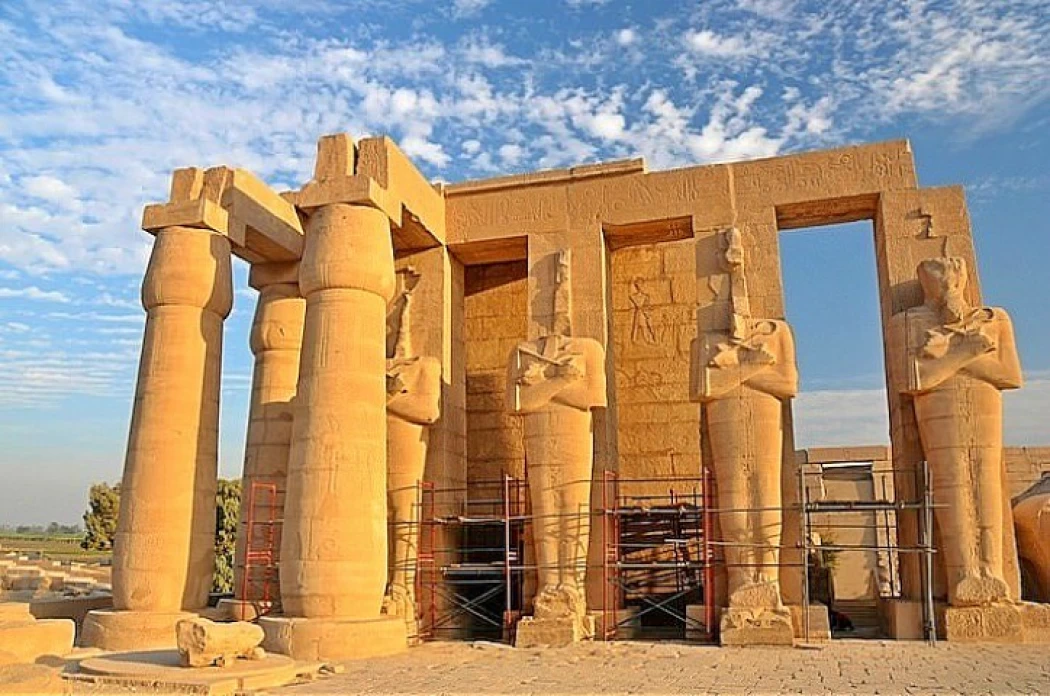
Ramesseum Temple
Facts about Ramesseum
One of the most significant Pharaonic temples that many people are unaware of is the Ramesseum Temple. It is situated in the Luxor Governorate in the West Bank. Built by King Ramses II, it is a masterwork of architecture that has several enormous statues of the monarch as well as numerous inscriptions that describe life in the Pharaonic realm during that time.
King Ramses II constructed the Ramesseum Temple with the intention of worshipping the god Amun. This temple gained notoriety because of the nearby warehouses, which contained numerous papyri, notably the massive statues of King Ramses II found in the Sinuhe Papyrus. The first courtyard is currently demolished. The temple contains inscriptions decorating the temple wall with the events of the famous Battle of Kadesh in which King Ramses II defeated the Hittites and how he planned the war. The temple also contains inscriptions depicting a scene of the king in his war chariot with the Hittite chariots above him as he tries to attack them, a scene representing the city of Kadesh within its fortified walls, and a scene of the king holding his enemies and beating them.
On the opposite western wall there are inscriptions of the god Thoth recording the name of the king on the leaves of the sacred tree, then scenes of the king sitting in front of the sacred tree. The temple is surrounded on three sides by corridors and storerooms with vaulted roofs of mud bricks with some stone architectural elements. They were most likely used to store grains, clothes, hides, oil pots, wine and beer. Some of them contained two rows of columns and are believed to be for priests and employees.
During the joint Egyptian-French archaeological mission, significant remnants of the 19th and 20th dynasties were discovered at the Ramesseum Temple, which is located in Luxor's West Bank. They discovered a school for the education of worker's children, as well as a collection of public kitchens, butcher facilities, and large warehouses. A massive mud-brick wall, measuring 270 meters in length and 175 meters in width, encircles the temple.














